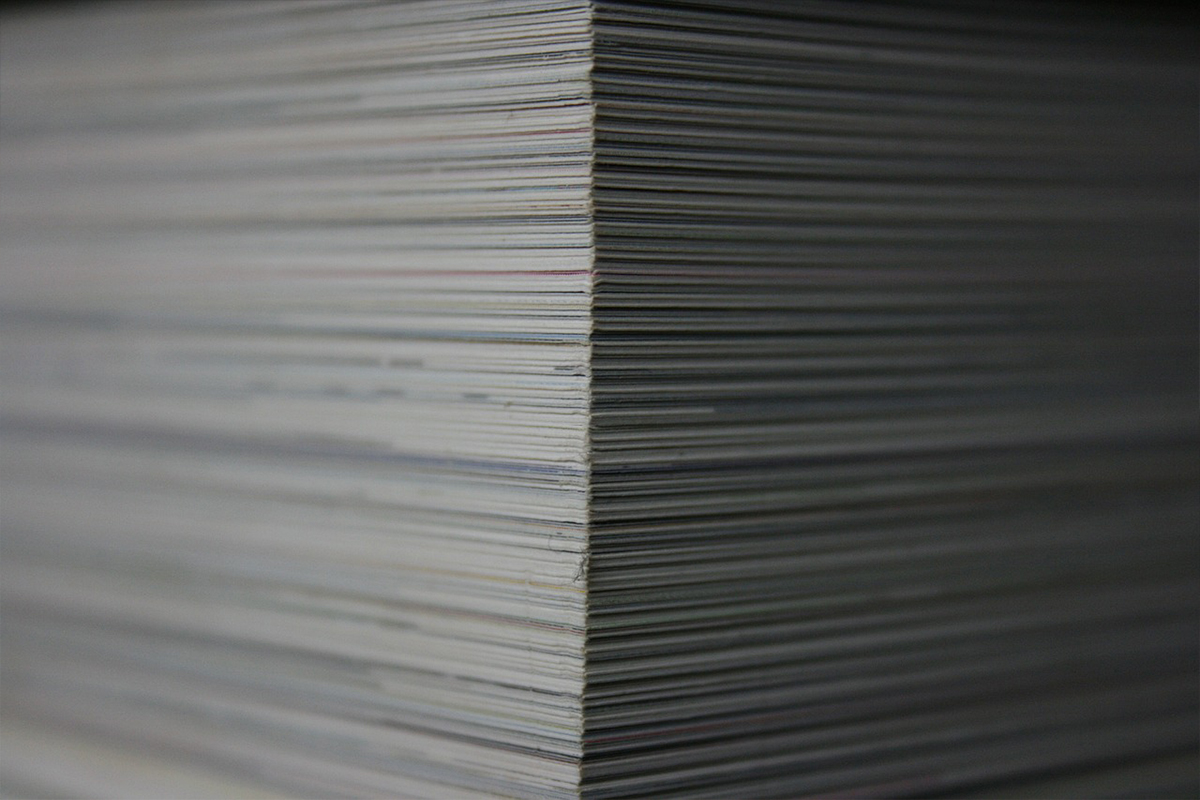Work Well Blog
June 1, 2023
Exploring the Advantages of Printed Material vs. Digital
In an increasingly digitized world, where screens dominate our daily lives, there is something undeniably captivating about the tactile experience of printed material. While digital communication has undoubtedly revolutionized how we connect and consume information, it is essential to recognize the enduring benefits of printed material. Why is it that printed material continues to hold a special place in our hearts? Hear are seven unique advantages it offers.
1. Unlike digital content, printed material allows for a sensory experience; it is tangible and engaging. The weight of a magazine in your hands or the texture of a well-crafted business card creates a connection that goes beyond the virtual realm. Printed material engages multiple senses, invoking emotions and leaving a lasting impression on readers.
2. In a world where anyone can create digital content, printed material holds a certain level of credibility. Physical materials, such as books or reports, undergo rigorous editing and review processes, giving them an air of authority. Printing instills trust in readers and can elevate the perceived value of the information presented.
3. Our online environment is filled with pop-up ads, notifications, and clickable links, so it's easy to get side-tracked from the intended message. Printed material offers a respite from the constant barrage of digital interruptions. With no hyperlinks or flashing banners vying for attention, physical documents allow readers to focus on the content at hand, fostering deeper engagement and understanding.
4. Printed material does not require an internet connection or a specific device to access. It can be enjoyed anywhere, at any time, without the need for battery life. This accessibility ensures that the message is not dependent on technological barriers, making it available to a broader audience.
5. Printed material has been proven to have a stronger impact on memory retention compared to digital content. Research shows that people tend to retain information better when they read it on paper rather than on a screen. The tactile experience of physically turning pages and visually engaging with printed material creates stronger neural connections, resulting in improved recall.
6. Printed material allows for highly targeted and personalized communication strategies. Direct mail campaigns, for example, can be tailored to specific demographics, delivering targeted messages to the right audience. Personalization techniques, such as variable data printing, enable the inclusion of individualized elements, such as names or customized offers, further enhancing the impact and relevance of the communication.
7. Printed material offers limitless possibilities for creative expression and brand reinforcement. The use of high-quality paper, captivating imagery, and thoughtful design can elevate the aesthetic appeal of printed material, creating a visually engaging experience for readers. This visual impact reinforces brand identity and fosters a sense of authenticity and professionalism.
While digital communication undoubtedly brings convenience and speed to our lives, it is crucial not to overlook the enduring value of printed material. From its tangible and engaging nature to its credibility, reduced distractions, and enhanced memorability, printed material offers a unique set of benefits that cannot be replicated in the digital realm. By incorporating printed materials into our communication strategies, we can create more meaningful connections and engage our audience in a way that resonates on a deeper level.
